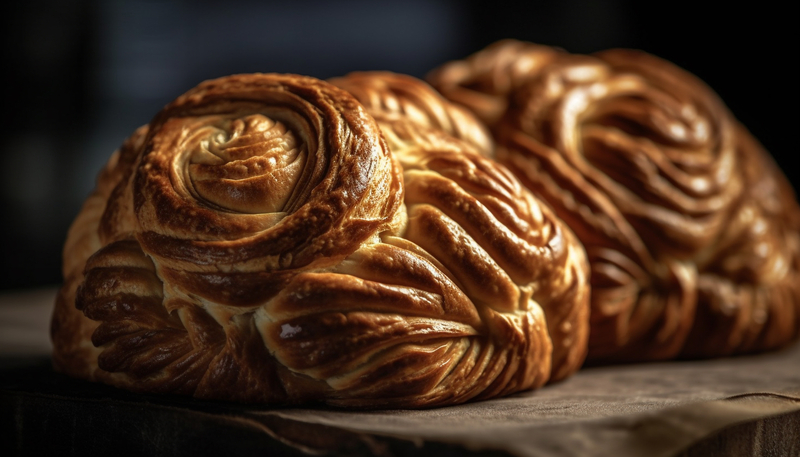 Baking is a beloved culinary art form that combines science and creativity in the most delicious way.
Baking is a beloved culinary art form that combines science and creativity in the most delicious way.
While many people might not think of it as such, baking is, in fact, a perfect example of physical chemistry in action.
In this article, we’ll explore the science behind baking and delve into the intricate relationship between ingredients, reactions, and the final baked goods that grace our tables.
The Ingredients – A Matter of Chemical Composition
- Flour: The Foundation of Baking
Flour is the fundamental ingredient in most baked goods.
Its chemical composition, primarily consisting of starch and protein, plays a pivotal role in determining the texture, structure, and flavor of the final product.
Understanding the interactions between flour proteins (gluten) and water is essential for creating the desired crumb and structure in bread and pastries.
- Sugar: Sweet Chemistry
Sugar is not just a sweetener; it’s a key player in the chemistry of baking.
As sugar melts during the baking process, it caramelizes, producing the appealing golden-brown color and distinct flavors in baked goods.
Moreover, sugar also affects the texture and tenderness of the final product by interfering with protein and starch interactions.
- Leavening Agents: Gases in Action
Baking powder and baking soda are leavening agents that release carbon dioxide gas when mixed with wet ingredients.
This gas is responsible for the rising and leavening of dough and batter, resulting in fluffy cakes, light bread, and tender pastries.
The chemical reactions that take place when these agents are activated are a crucial aspect of baking chemistry.
- Fats: The Luscious Lubricants
Fats, such as butter and oil, add moisture, flavor, and tenderness to baked goods.
Their unique chemical properties contribute to the texture and mouthfeel of cookies, cakes, and pies.
Understanding the role of fats in emulsions and how they interact with other ingredients is essential for achieving the desired texture and flavor in baking.
Heat and Chemical Reactions – Baking’s Transformational Power

- The Maillard Reaction: Browning Magic
The Maillard reaction is a fascinating chemical process that occurs during baking, resulting in the browning and development of complex flavors in baked goods.
It’s responsible for the crispy crust of bread, the golden hue of cookies, and the rich aroma of roasted coffee.
Understanding the Maillard reaction is a cornerstone of baking chemistry.
- Gelatinization: Starch Unleashed
When starch molecules in flour absorb water and heat, they undergo a process called gelatinization.
This transformation thickens the mixture, providing structure and stability to baked goods like custards, puddings, and sauces.
Knowledge of gelatinization is crucial for achieving the desired texture and consistency in various baked recipes.
- Protein Denaturation: The Role of Eggs
Eggs are a common ingredient in baking, acting as emulsifiers, binders, and leavening agents.
When eggs are exposed to heat, the proteins within them denature, coagulate, and set the structure of baked goods.
Understanding the delicate balance of egg proteins in different recipes is essential for achieving the perfect texture.
Temperature and Time – Precision Matters
- The Science of Oven Temperature
Baking temperatures are carefully chosen to trigger specific chemical reactions while ensuring that the exterior and interior of the baked goods cook evenly.
Understanding the role of temperature in baking is vital for preventing overbaking, underbaking, or undesirable textural changes.
- Timing Is Everything
The baking time is a critical factor in determining the final outcome of baked goods.
Precise timing ensures that the chemical reactions occurring in the oven reach their desired endpoints, resulting in perfectly baked treats with the right texture, color, and flavor.
The Art of Baking – Where Creativity Meets Chemistry
 While baking is undoubtedly rooted in the principles of physical chemistry, it also provides a canvas for culinary creativity.
While baking is undoubtedly rooted in the principles of physical chemistry, it also provides a canvas for culinary creativity.
The careful balance between science and artistry in baking allows for endless experimentation with flavors, textures, and presentations.
Whether you’re following a classic recipe or inventing your own, understanding the chemistry of baking empowers you to create delectable masterpieces.
Bottom Line – Is Baking a Physical Chemistry?
In conclusion, baking is, indeed, a captivating application of physical chemistry.
The precise interactions of ingredients, the transformative power of heat, and the delicate balance of time and temperature all come together to create the delightful baked goods we savor.
So, the next time you’re in your kitchen, armed with flour, sugar, and butter, remember that you’re not just baking; you’re engaging in a delicious dance of chemical reactions and creativity.


